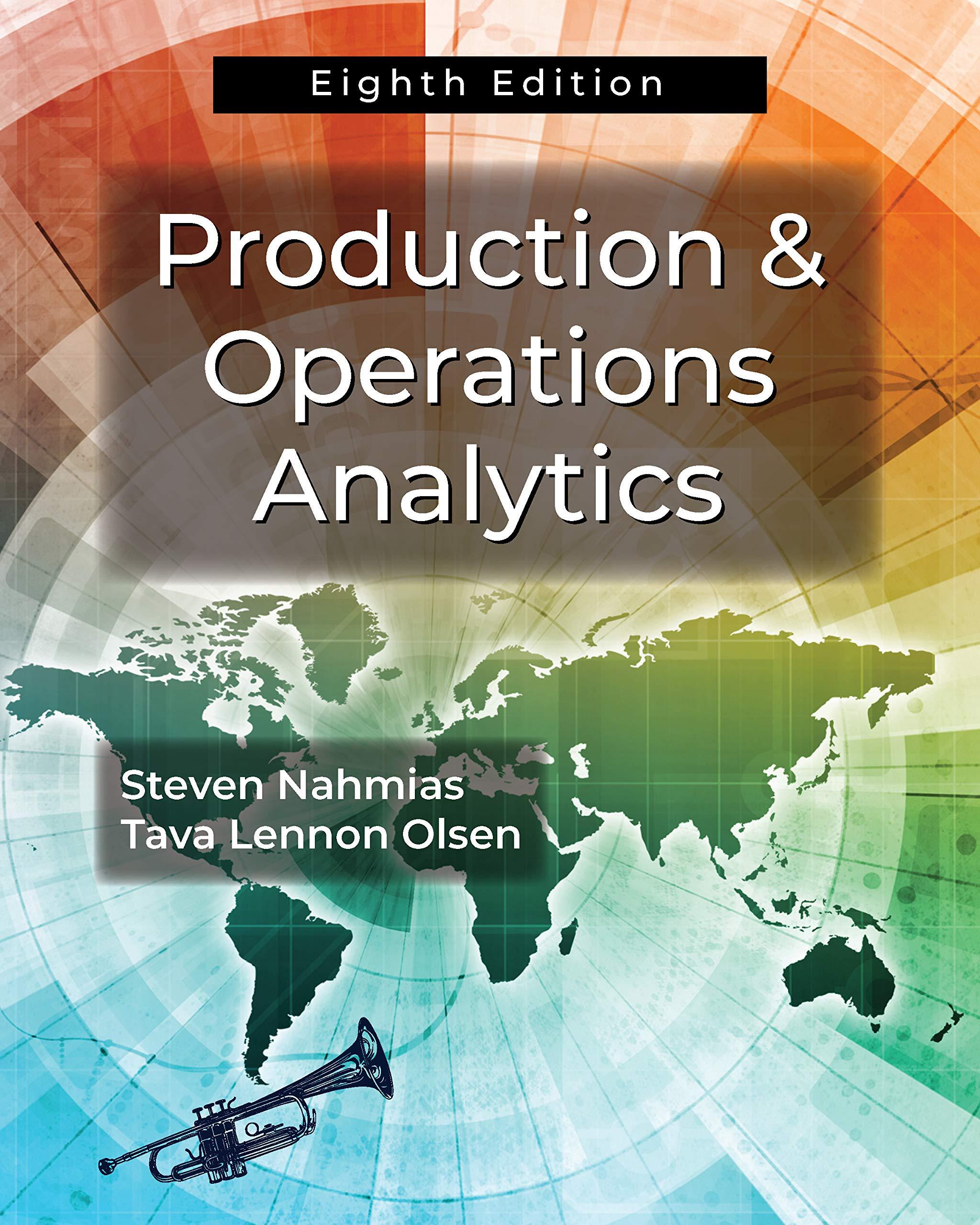Question
QUESTION 4 Discuss what would happen to the break-even should the additional Health and Safety employee be employed and what will happen to the price
QUESTION 4
Discuss what would happen to the break-even should the additional Health and Safety employee be employed and what will happen to the price and demand of the products. ?
Babylicious Foods (Pty) Ltd (BL) manufactures organic fruit puree blends for babies. The puree is produced at its plant situated in Mpumalanga. Babylicious has won several local and international awards for its organic puree recipes. Babylicious fruit puree blend Baby fruit puree blend is made by mixing seasonally available fruit (like apple, banana, peach etc.), based on existing recipes. Various fresh fruit is obtained from a few selected farms across the region. A selection of fruit is then combined based on the applicable recipe and cooked in batches of 100 litres. No normal loss takes place during the cooking process. The fruit is deskinned, pitted, and crushed in a specialised mixer to form the raw puree and then boiled in a sealed cooker to prevent moisture loss. Quality control is critical and is performed throughout the process. Purified water and spices are added lastly and mixed to form the final puree blend. Once cooled down, the filling process is done by an automated filling machine where jars are filled to predetermined levels based on weight. Each jar is weighed twice electronically, before being capped, labelled, and sealed. After each puree batch is processed, the whole production line and all equipment are cleaned. BLs plant operates for twenty (20) working days per month. Product details are as follows: Notes Standard Health Volume of jar 1 700 ml 300 ml Puree batches produced per day 2 3 1 Boiling time per batch 90 minutes 60 minutes Puree content in final puree blend (%) 3 33% 40% Quality checks per batch 4 1 3 Budgeted sales price per jar (R) 28,00 20,00 Budgeted variable cost per jar (R) 15,00 12,00 Notes: 1) Two products are produced, Standard and Health Puree Blend. The Health Puree Blend contains only fruit with a high vitamin C content and the cooking time is reduced. 2) Three batches of Standard are produced per day, and only one for Health. 3) The percentage of cooked puree contained per jar of final Puree Blend. 4) For the Standard puree, one (1) quality check is performed on the contents of the cooker. The Health puree has a specific mix of spices excluding sugar and three (3) checks are performed during its processing time. The plant has a monthly budgeted fixed manufacturing overhead cost of R171 180. The manufacturing overhead is allocated to the two products based on the volume of final product produced. BL has performed an activity-based costing (ABC) exercise with the following monthly data being recorded: NOTES R *Fruit crushing 5 000 *Processing 5 79 860 *Water and spices: adding and mixing 16 000 Filling of jars, capping and sealing 40 320 Quality control 4 30 000 TOTAL 171 180 * These costs should be included in one item for ABC reporting, excluding cleaning cost 5) Processing consists of the boiling time and the cleaning of the equipment. The cleaning cost amounts to twenty-five percent (25%) of this processing cost item only and should be shown separately. 6) During the financial year ended June 2022 BL actually sold 280 000 Standard and 140 000 Health jars of fruit puree blend at average prices of R25,50 and R19,00 per jar, respectively. The annual non-manufacturing fixed costs are as follows: Standard R Health R BL Plant R TOTAL Sales related 24 000 24 000 6 000 54 000 Administrative 106 000 106 000 Total 160 000 The sales related actual fixed costs for June were as budgeted, but R8 000 was saved on the administrative costs. Actual variable cost per Standard jar was thirty cents (30c) higher than budgeted in June, whilst Health increased by twenty cents (20c) per jar. The expenditure variance for the fixed manufacturing overhead of the plant was R21 800 favourable for the year. The plant was closed for two days in June for sterilisation after a quality check identified a bad batch of puree with possible health risks. BL had to completely clean and rinse the production line at a cost of R67 000 which was not budgeted for and is deemed to be a fixed cost. All batches still in stock were destroyed. The twenty working days were not impacted, scheduled maintenance was just postponed. The director of BL foods said that there is no need to recall the batches already shipped, as the quality control report stated that the risk as low. The Health and Safety manager has however asked that an additional full-time employee, at a cost of R10 000 per month be appointed to assist with the quality control. Calculate the fixed manufacturing overhead rate per product, per jar using: (i) An activity-based costing approach
Step by Step Solution
There are 3 Steps involved in it
Step: 1

Get Instant Access to Expert-Tailored Solutions
See step-by-step solutions with expert insights and AI powered tools for academic success
Step: 2

Step: 3

Ace Your Homework with AI
Get the answers you need in no time with our AI-driven, step-by-step assistance
Get Started


